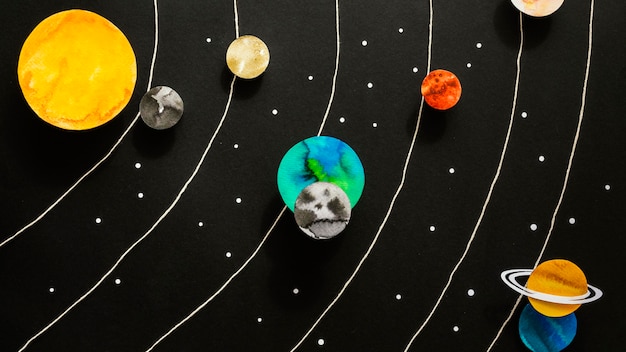Curious and Fascinating Facts About Mercury

Mercury is the smallest planet in our solar system.
Mercury is named after the Roman god known for his speed and agility.
Mercury orbits the sun faster than any other planet.
On Mercury, a day is longer than a year.
Mercury has a thin atmosphere and no substantial weather patterns.
The surface temperature of Mercury can reach extreme highs and lows.
Unlike other planets, Mercury has a metallic core.
Mercury has been visited by only one spacecraft, NASA’s Messenger.
The longest canyon in the solar system, Valles Marineris, is located on Mercury.
Mercury does not have any known moons or rings.
There is evidence of water ice in the polar regions of Mercury.
Mercury is the second densest planet after Earth.
The Italian astronomer Giovanni Schiaparelli first observed surface features on Mercury.
Mercury’s surface is covered in craters, similar to the moon.
Due to its proximity to the sun, Mercury is difficult to observe from Earth.
Mercury experiences the most significant temperature differences between day and night.
The highest temperature recorded on Mercury was around 800 degrees Fahrenheit.
Mercury’s gravity is only 38% of Earth’s gravity.
Mercury’s magnetic field is much weaker than Earth’s.
The MESSENGER spacecraft discovered evidence of volcanic activity on Mercury.
Mercury’s surface appears gray and rocky, with a lack of vegetation.
Curious and Fascinating Facts About Mercury part 2
Quick silver is another name for the element mercury.
Mercury has been used in various applications, such as thermometers and barometers.
The symbol for mercury on the periodic table is Hg, derived from its Latin name hydrargyrum.
Mercury is toxic to many organisms, including humans.
Mercury is classified as a heavy metal.
The Romans believed that mercury had healing properties.
Mercury poisoning can lead to neurological damage.
Mercury is used in dental amalgams for fillings.
The boiling point of mercury is relatively low compared to other metals.
The Mariner 10 spacecraft was the first to fly by and study Mercury in the 1970s.
Mercury’s thin atmosphere contains trace amounts of oxygen, sodium, hydrogen, and helium.
The surface of Mercury is covered in impact craters from meteorite collisions.
Despite its small size, Mercury has a surprisingly strong gravitational pull.
The Caloris Basin on Mercury is one of the largest impact basins in the solar system.
The surface terrain on Mercury can be rugged and mountainous.
The temperature on Mercury can drop below freezing at night.
Mercury is considered the most metal-rich planet in the solar system.
There are no liquid oceans or bodies of water on Mercury.
Mercury’s orbit is the most elliptical of all the planets.
Mercury is one of the five planets visible to the naked eye from Earth.
The average distance between Mercury and the sun is about 36 million miles.
Mercury’s gravity is not strong enough to hold onto a substantial atmosphere.
Despite being the closest planet to the sun, Mercury is not the hottest.
Studying Mercury can provide valuable insights into the formation of our solar system.

